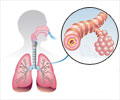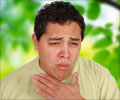A pall of gloom had descended over the traveling class the world over as a volcano erupted in faraway Iceland. Flights were grounded, and travelers were stranded indefinitely.
Volcanoes in Iceland may be something of an oxymoron but who can question the vagaries of nature?
A pall of gloom had descended over the traveling class the world over as the volcano, Eyjafjallajokull, erupted in faraway Iceland. Flights were grounded and travelers were stranded for indefinite periods leading to economic turmoil and desperacy.Ashes to Ashes, Dust to Dust
Volcanic ash is made up of shreds of rocks and glass all carried forth in a mix of foamy steam. During a volcanic eruption, the magma which is located deep below the earth is brought to the earth’s surface and during this process it becomes depressurized. The magma melts the ice cap (if present) atop the volcano and this generates plenty of steam.
Uncertainties
This act of nature is disconcerting as Eyjafjallajokull continued to cough up more ash and throw it high for all to catch! But not high enough as the ash was ejected only as high as 20,000 feet while it requires to reach a height of 33,000 feet in order to reach the stratosphere and usher in climate change.
Besides there is a bit of bad history. It has been recorded that in the past, the eruption of Eyjafjallajokull has always incited its larger neighbor – Katla- to follow suit. Also, the amount of ash in the air cannot be precisely estimated, although experts are frantically seeking the help of computers to draw an estimate.
Health impact
Low amounts of ash plumes have settled on the ground in certain areas of Scotland. If more dust and ash settles on the ground it can have serious health implications. The highest impact would come from the smallest ash particles that can be deeply drawn into the lungs.
Some points to keep in mind-
• People exposed to ash may notice symptoms such as itchy eyes, runny nose or cough
• Tearing of the cornea, inflammation or sticky discharge in the eye may also be seen in some
• People with respiratory problems such as bronchitis, emphysema or asthma may experience discomfort. They may experience worsening of symptoms for a short period
• Sometimes silica could be present in volcanic ash. Continuous exposure to silica could lead to silicosis which involves scarring of the lungs
• Certain level of skin irritation may be expected depending on the level of ash exposure
The British Lung Foundation Spokesman Professor Malcolm Green said: "We would advise people living with a lung condition in affected areas to carry their medication as a precaution as they may experience a short-term worsening of symptoms."
The volcanic ash plumes are also likely to have traces of sulphur dioxide- therefore if people detect a rotten egg –like smell, that is characteristic of sulphur, they are advised not to panic. Sulphur dioxide is not a health hazard at the level currently emitted.
Precautionary measures for the Public
Few mitigative measures that the general public can follow are mentioned below –
• Make sure you wear protective clothing
• Wear a dust mask if possible. If this is not available, make an improvised masks from fabric that would act as a filter for dust
• Wet the mask often to improve effectiveness
• Wear goggles or other glasses. Avoid contact lens.
• Avoid unnecessary exposure to ash
• People who are sensitive to dust should try to remain indoors
• Those with respiratory illnesses must keep inhalers and medications at hand
• If the ash intensity becomes severe it could disrupt road visibility. Make sure you drive carefully.
• Make sure that children restrict their out door activity during ash fall
This episode, involving the Icelandic volcano, has once again exposed human vulnerability in the face of nature's unpredictability! Be fore-armed by following the precautionary measures to mitigate the risks involved in the event of volcanic ash exposure!
Source-Medindia
Dr. Reeja Tharu/L









